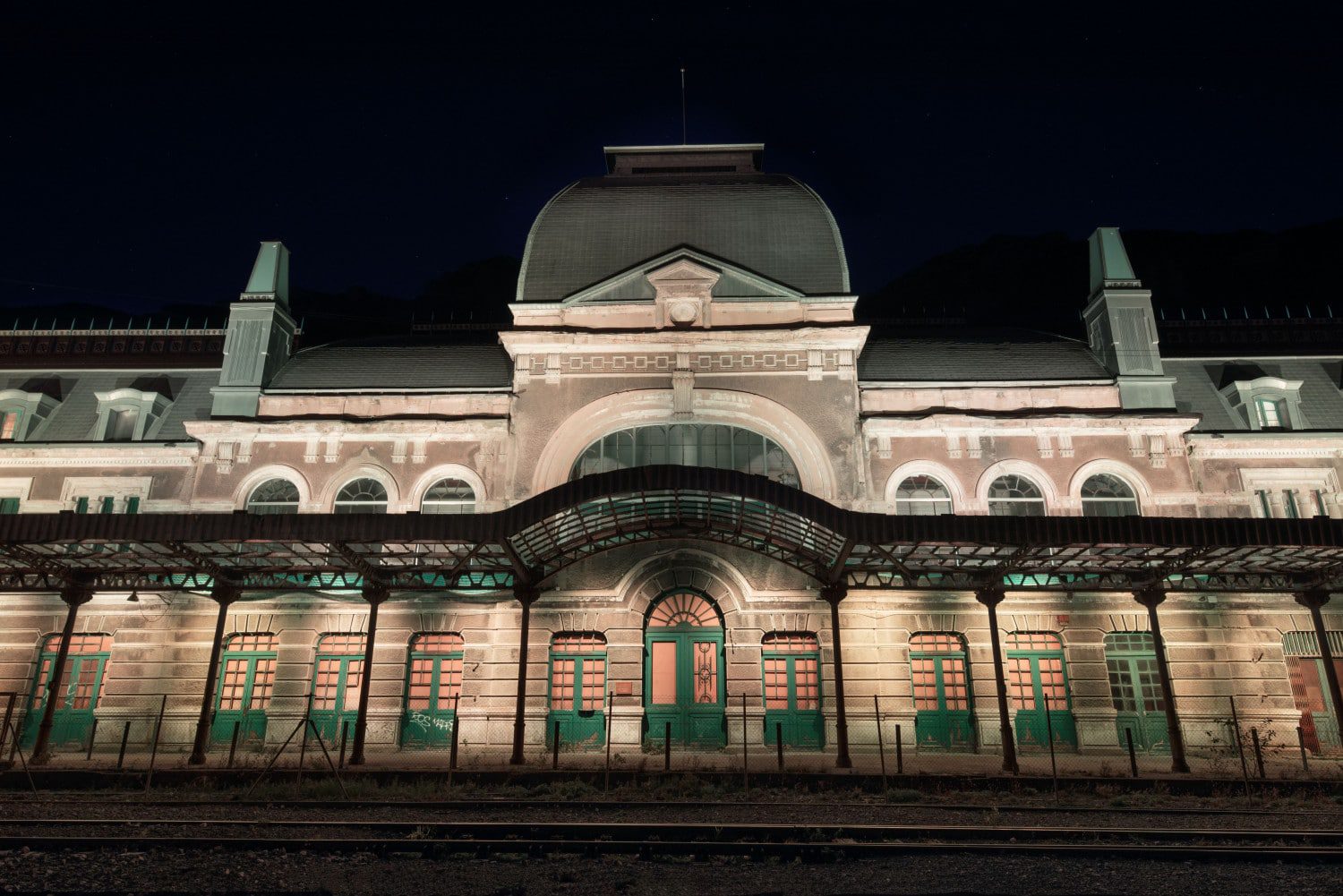In 1928, Canfranc International Station was the largest in Europe. It was the most important transport center that connected Spain and France for 50 years.
Canfranc was also popular among film directors. Films were often filmed on its territory, such as scenes from the cult “Doctor Zhivago”.
Due to its colossal dimensions – platforms more than 200 meters long, a magnificent facade and an unusual location – in the mountains at an altitude of 1200 meters, the station has earned the nickname “the Titanic of the mountains”.
From the point of view of architecture, it is an excellent example of a combination of classicism and art nouveau. Marble, concrete and glass, typical of classicism, were used as the main materials for the construction.
Unfortunately, the station ceased to function in 1970 when, as a result of a train accident, the bridge connecting France and Spain was destroyed. Financial pressure from the French national railway company forced the French government to abandon the reconstruction of the bridge, leading to the closure of the Spanish-French border in this section.
After that, the “Mountain Titanic” service became unprofitable for the Spanish government and work on the station was stopped.
It is interesting to note that in one of the tunnels adjacent to Canfranc, a unique research laboratory was built at a depth of 850 meters. Its location made it possible to completely protect the laboratory from cosmic radiation, which allowed scientific experiments with dark matter to be carried out freely.
Thus, although the station has not functioned for 50 years as a transport hub, it continues to be useful to the world.
Currently, the main area of the station is derelict, but the management company continues to maintain the facade in decent condition. The Spanish authorities have big plans to turn the station into a luxury hotel.
It would breathe new life into the “Titanic of the Mountains”, which still retains remnants of its former glory.
In his book ‘El Canfranc, Historia de un tren de leyenda’ (translated: ‘The Canfranc, story of a train of legend’), Alfonso Marco, a historian and technician for the Subdirectorate of Technological innovation at Spanish railway infrastructure manager Adif – who was himself born from a family of rail workers in Canfranc – writes that the cost for the project was estimated at 3.2 million pesetas (the rough equivalent of €20,000), plus over 1.2 million (€7,200) to build access points, docks and other facilities.












